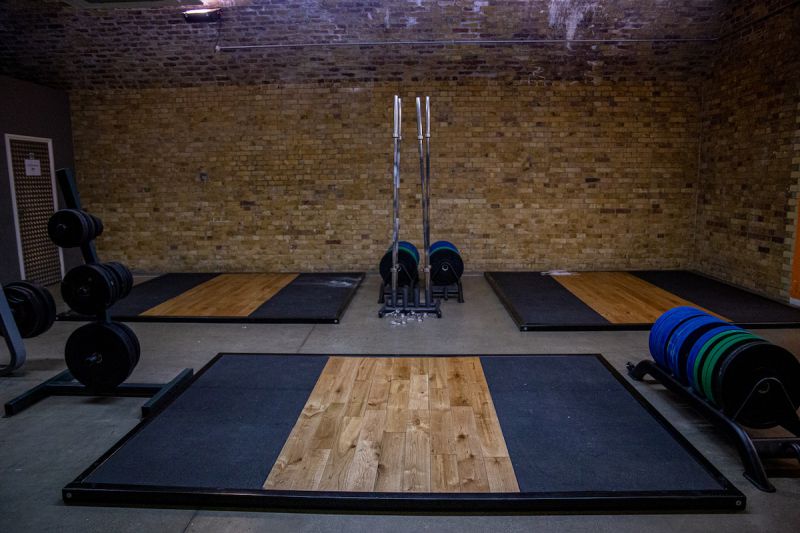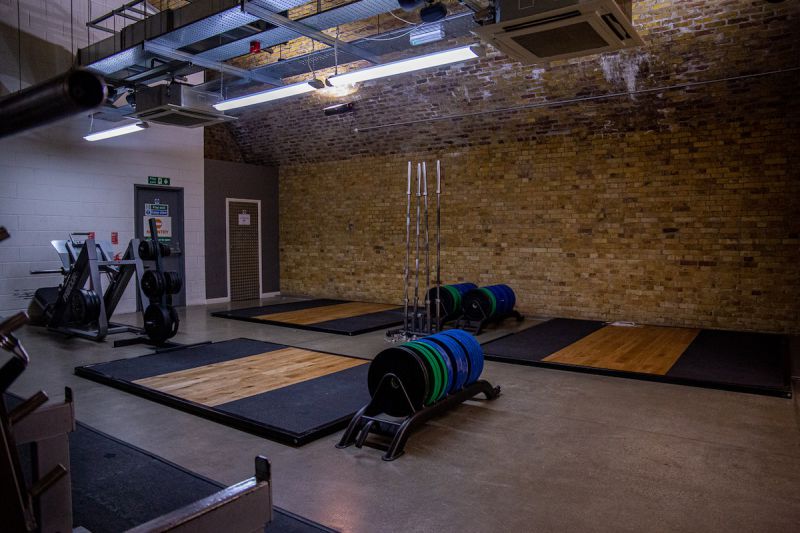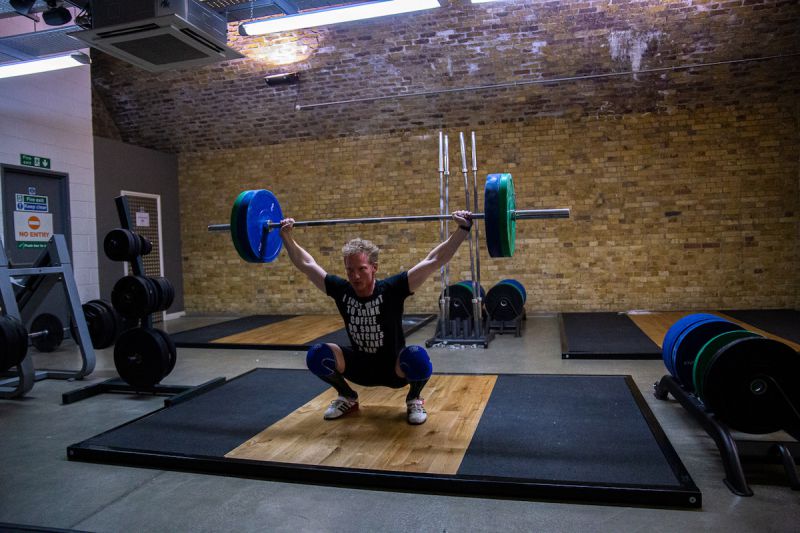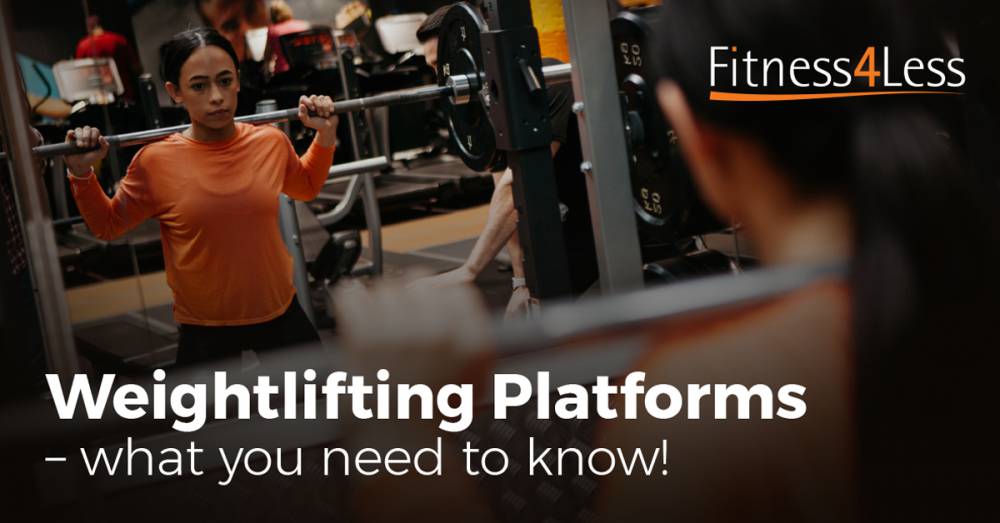Training with weights supercharges your body’s capacity to burn fat and build strong, lean muscle by expending energy, boosting your metabolism and stimulating your muscle fibres. Weight training will give you a more defined, muscular shape, help you stay mentally and physically fit, manage your weight, improve your self-esteem and make for a longer life. As you gain strength, your joints and muscles will work more efficiently in areas such as balance, stamina, flexibility and the capacity to avoid injury.
Research shows that the muscle mass decline, loss of bone density and unsteadiness that comes with age, can be seriously reduced by weight-bearing exercise. The NHS recommends that adults should be doing strength exercises on at least two days a week, in addition to 150 minutes of moderate aerobic activities like cycling, brisk walking or running. For the more serious athlete, Olympic Weightlifting Platforms provide the optimal conditions for improving your snatch, clean and jerk and many other important lifts.
A weightlifting platform usually comprises a square or rectangular, slightly raised suspended floor with a wooden and rubber surface and it serves several purposes: -

- Protecting weightlifting equipment and the gym floor – when dropping a bar and its loaded disks, a lifting platform can help absorb some of the shock, meaning that there is less impact on the floor, reducing the risk of damaging this. Also, from the point of view of the user, employing a platform means you can push your weights up knowing that the platform is there to take the weight if you fail to perform the exercise. It does not just absorb noise but also cushions the force, stopping a shock back through your arms, making it easier on your joints.
- Safer Lifting – using a platform gives the user a designated lifting space that can be identified by others and avoided by them when crossing the gym floor. Larger lifts with heavier weights can sometimes go badly wrong and having a specific area with this in mind can help reduce the risk of other people being injured.

• Improved Technique - either a flat wooden board or a rubber surface will help with foot stability and body position when performing a lift. The wooden area will also enable your feet to slide when performing certain movements, such as the top of a jerk. This will improve your overall lifting technique and allow you to progress more quickly and lift heavier weights.
• Noise reduction – the various elements of an Olympic lift may at times mean that a heavily weighted bar needs to be dropped from a height. Using a lifting platform can contain much of the noise and keep it to a specific area of the gym, thereby preventing it from reverberating around other areas.
 What can go wrong when lifting weights?
What can go wrong when lifting weights?If you have not been properly trained or advised on how to do weight training correctly, you will be at high risk of injury, most commonly to your back. Most injuries occur through trying to lift a weight that is too heavy for you, not having enough core stability to take the load or poor technique and form.
Why you need a trainer’s assistanceWithout guidance from a professional expert and without experience, it is impossible to ascertain what weights to use and how to perform lifts safely and effectively. Asking a trainer for assistance will not only help prevent an injury, but it will also make sure the exercises you are doing will provide maximum benefit in helping you achieve your goals as quickly and efficiently as possible.
A personal trainer will teach you how to set up your equipment, follow the correct safety procedures and brace your core, as well as analysing your posture and offering tips on acquiring the flexibility needed for lifting weights. You also need to learn the basics first. For example, before trying to perform a deadlift, you need to master the kettle bell deadlift, and before you progress to the Olympic lift, you need to learn how to do the hex bar deadlift correctly.
What are the basics of good technique?Core Strength and stability are essential for performing basic good technique. Keep your core and back as stable as possible whilst doing exercises and take your time. Perform all exercises with a 2 second ratio - for example,when doing a a bicep curl, do 2 seconds up and 2 seconds down. Try not to lock your joints out - make sure your muscles are taking the load and not your joints. But most importantly, do not forget to train your Abs!
Belts, gloves & slippery hands
- Belts can help to maintain your posture during those exercises that may potentially cause injury - deadlifts and squats. They help protect your back by reducing stress and stabilising the spine, and giving you something to brace against. Generally, they should be used when lifting very heavy weights.
- Gloves can help protect your hands whist training but sometimes they actually give you less grip when you’re doing own body weight exercises, such as pull ups. However, they maybe helpful if you are training regularly and suffer with calluses.
- If you are someone who perspires a lot when training, then keep a towel or tissue near by and dry your hands before big lifts to help prevent the bar from slipping out of your hands and/or use liquid chalk to improve your grip.
Back SafetyDo not walk straight from your car into the weights room and start lifting without warming up. This is sure to result in an injury at some point! Always warm up the body first; do at least 5 minutes at a reasonable resistance on cross-trainer or rower, followed by a set of lower weights for the muscles you are training that day. For example, on a “chest day”: do 5 minutes on a cross-trainer, followed by 20 push ups or just use the 20kg bar with no weights added on the flat bench, before increasing the weight load.
Your gym has all the equipment you need for effective weight training, but before you embark on this, you do need professional guidance and advice on how to use this correctly, how to prepare yourself for lifting and how to protect your body, learn the correct techniques to avoid injury and gain maximum benefit from this excellent fitness discipline.
This blog was written with advice from weightlifting experts, Cheryl Parker from Welcome Gym Cheltenham and Simon Ottaway from Welcome Gym Maidstone.
![]()
![]()
![]() blog
blog![]()
![]()
![]() blog
blog


